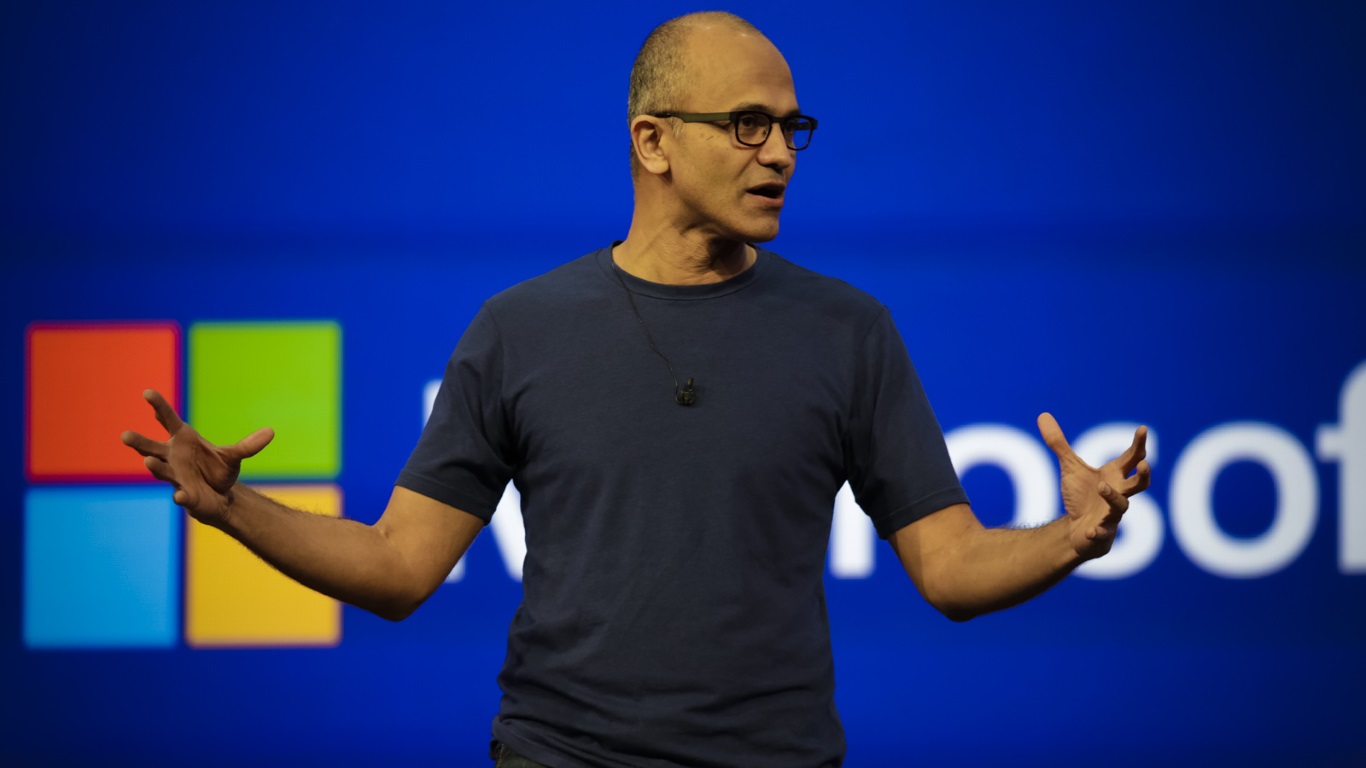 NEWS
NEWS
 NEWS
NEWS
 NEWS
NEWS
Microsoft CEO Satya Nadella
Microsoft’s transition from the desktop to mobility and the cloud is gaining momentum, with the company reporting growth in its cloud services, software and Surface tablet divisions – all areas where it’s been playing catch-up.
On Thursday the Redmond firm posted its first quarter fiscal earnings, showing healthy sales revenues of $23.2 billion, up 25 percent from the year before, although earnings were at $0.54 per diluted share, down 13 percent from $0.62 one year ago. Microsoft also posted a drop in net income – down 13 percent to just $4.54 billion.
But the figures are misleading, due to the aforementioned period of transition. Microsoft had to cough up some $1.14 billion in expenses related to its restructuring plan and the integration of Nokia’s handset division into the company. Remove these costs from the equation and Microsoft’s net income was actually up by a healthy 8 percent.
One area where Nokia’s acquisition did show some immediate benefit is in Microsoft’s smartphone division, which notched up far better than expected revenues of $2.6 billion – thanks to the record-breaking 9.3 million Lumia phones it sold in the quarter. Another surprise was Microsoft’s Surface tablet, sales of which rose to $908 million, a whopping 127 percent increase from last year.
Other divisions also did well, including computers, servers and software, but the real star performer was its cloud business. Microsoft didn’t disclose its cloud revenues, but sales rose by 128 percent, while services revenues from its Azure cloud platform increased by 121 percent. Moreover, it said gross profit margin in the division rose by 194 percent, despite the rising costs of its infrastructure, which includes the expense of building new data centers.
“We’re the only company with cloud revenue at our scale that is growing at triple digit rates,” said Microsoft CEO Satya Nadella (above), on a conference call with analysts.
Nadella, who only took over the company back in February, is presiding over a strategic shift as Microsoft tries to adapt to the shift to cloud computing. But he’s trying to maintain a precarious balancing act to protect the company’s consumer-facing businesses at the same time, publicly backing its Windows Phone, X-Box and Surface devices.
This transition has been awkward at times – Redmond announced 18,000 layoffs – or about 14 percent of its staff – earlier this year, though many of those jobs were in the Nokia group. The latest results are evidence that the company’s “mobile-first, cloud-first” vision is paying off, if Microsoft’s latest results are any indication.
“We will continue to drive the changes that will position us to the future,” said Nadella. “We’ll be accountable to our customers, partners and shareholders and relentless in our pursuit of areas of longterm growth.”
Support our mission to keep content open and free by engaging with theCUBE community. Join theCUBE’s Alumni Trust Network, where technology leaders connect, share intelligence and create opportunities.
Founded by tech visionaries John Furrier and Dave Vellante, SiliconANGLE Media has built a dynamic ecosystem of industry-leading digital media brands that reach 15+ million elite tech professionals. Our new proprietary theCUBE AI Video Cloud is breaking ground in audience interaction, leveraging theCUBEai.com neural network to help technology companies make data-driven decisions and stay at the forefront of industry conversations.